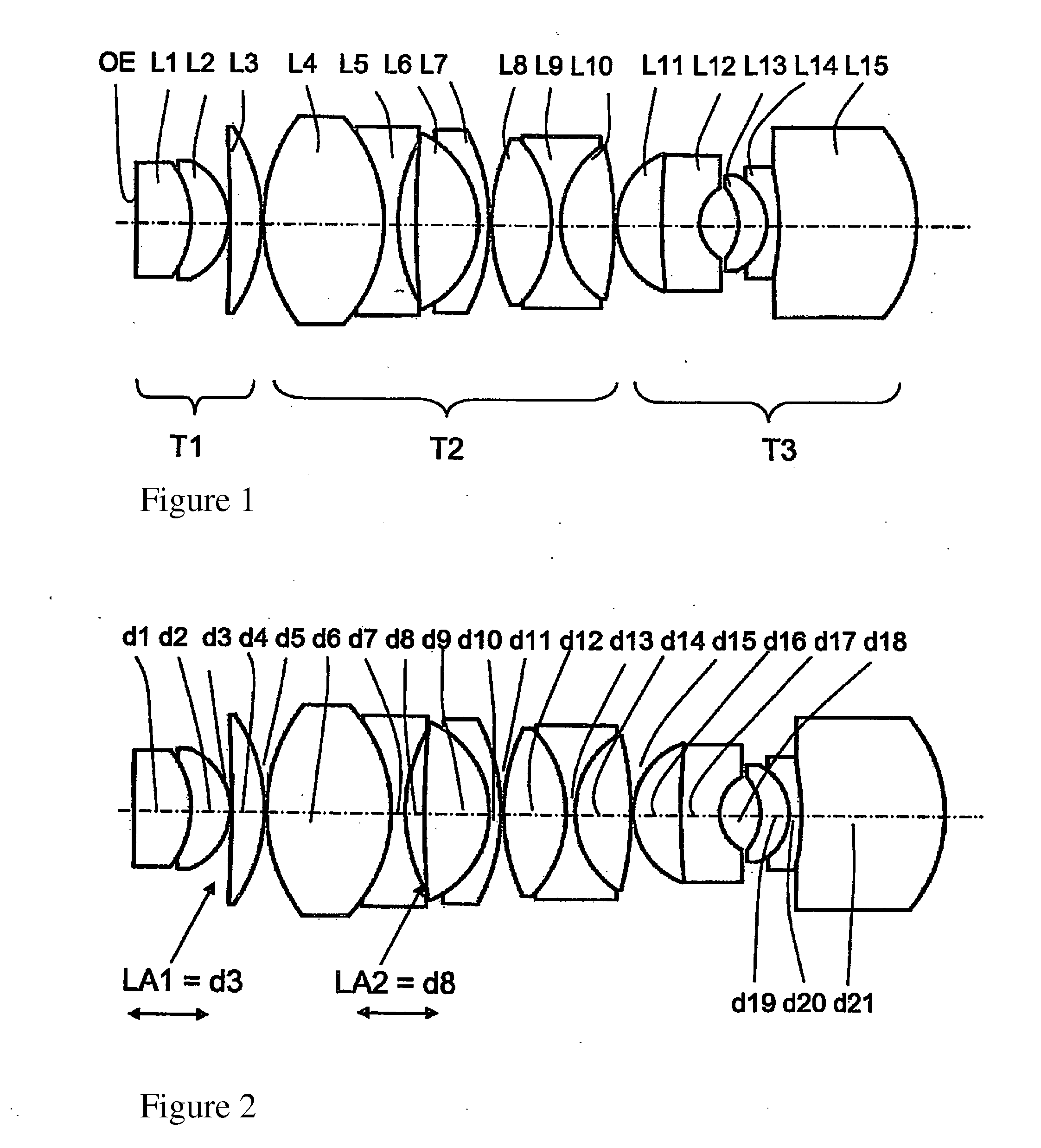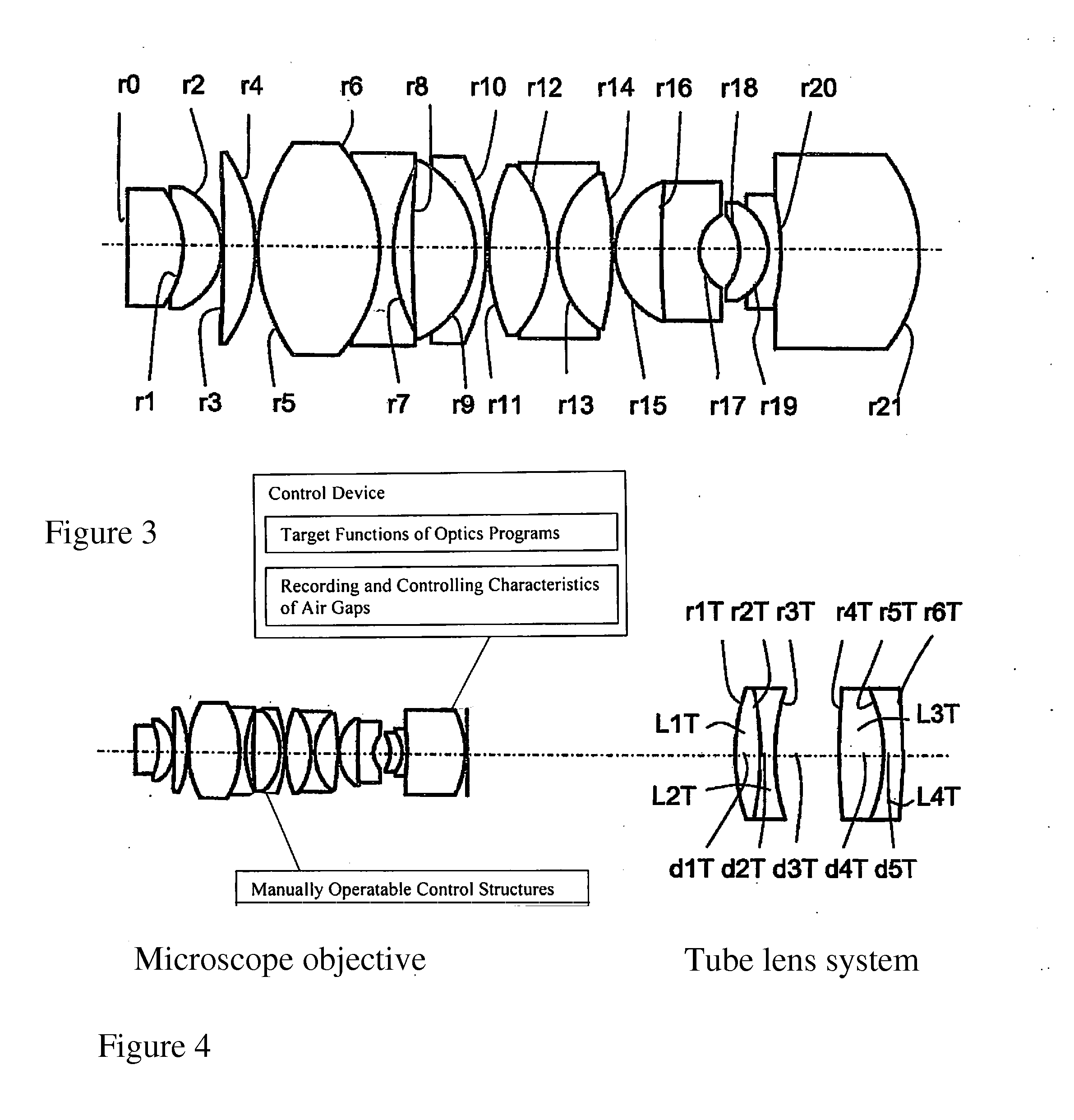Planapochromatically-corrected microscope objective
- Summary
- Abstract
- Description
- Claims
- Application Information
AI Technical Summary
Benefits of technology
Problems solved by technology
Method used
Image
Examples
Embodiment Construction
[0028]FIG. 1 shows the lens arrangement of the three optical subsystems as seen from the object plane OE with the subsystems T1, T2, and T3.
[0029]The subsystem T1 comprises two single lenses L2 and L3, wherein both lenses are collecting lenses bent in the direction of the object plane OE. L1 denotes the immersion means.
[0030]The second subsystem T2 has a double-cemented element with the lenses L4 and L5, a further double-cemented element with the lenses L6 and L7, and a triple-cemented element with the lenses L8, L9, and L10, wherein the lenses L4, L6, and L8, which are oriented in the direction of the object plane OE, are collecting lenses.
[0031]The third subsystem T3 comprises a double-cemented element with the lenses L11 and L12, and a triple-cemented element with the lenses L13, L14, and L15, wherein the concave surface of the lens L12 of the double-cemented element is facing the image, and the concave surface of the lens L13 of the triple-cemented element is oriented in the dir...
PUM
 Login to View More
Login to View More Abstract
Description
Claims
Application Information
 Login to View More
Login to View More - R&D
- Intellectual Property
- Life Sciences
- Materials
- Tech Scout
- Unparalleled Data Quality
- Higher Quality Content
- 60% Fewer Hallucinations
Browse by: Latest US Patents, China's latest patents, Technical Efficacy Thesaurus, Application Domain, Technology Topic, Popular Technical Reports.
© 2025 PatSnap. All rights reserved.Legal|Privacy policy|Modern Slavery Act Transparency Statement|Sitemap|About US| Contact US: help@patsnap.com



